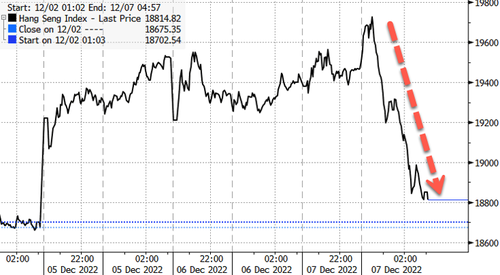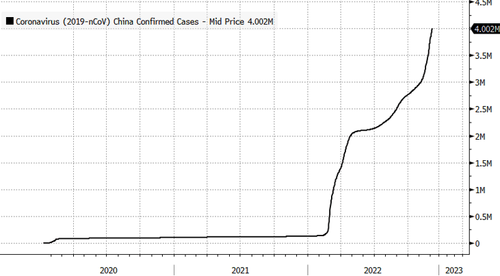Tulane University touted “the chance to train in a unique & wonderful city.” The University of Colorado offered a GIF of clouds moving across the state’s stunning mountains. And Boston Medical Center said in its plea, “Come hang with us! We’re pretty cool.”
The tweets last week came from infectious diseases fellowship programs, all scrambling for doctors after a number of their positions went unclaimed during the annual “match” process. The match is when residents pursuing specialized fellowships find out where they’re headed for their next round of training, similar to how medical students match into residences.
The lack of doctors entering ID fellowships — and the ensuing shortage of these specialists — has been a concern for years, with experts pointing to the comparatively low earnings these physicians make as a major disincentive for doctors considering which field to enter. But this year’s numbers marked a backslide. Fully a quarter of available positions went unfilled. Among the fellowship programs, 44% didn’t fill their slots, according to data from the National Resident Matching Program.
“You can’t sugarcoat it, can you?” said Lisa Chirch, the ID fellowship director at UConn Health.
It’s not just smaller or more rural programs that are now racing to recruit. Hospitals in biomedical hubs from Seattle to Boston are in the same place. The University of California, San Diego, has an unfilled spot for the first time since David Smith, now the ID division chief, joined the institution — in 1996.
The results have left the specialty weighing the Covid question: After watching ID physicians endure years of grueling work — work that often went uncompensated and that’s been met with resistance or outright hostility — did more residents just say, “No, thanks”?
“Maybe people are sick and tired of thinking about infectious diseases,” said Paul Pottinger, the director of the ID training program at the University of Washington. He said he wondered whether “the denigration of people who speak the truth” deterred people from wanting to go into infectious diseases, citing the death threats that Anthony Fauci has received.
At UW, two of the eight fellowship spots went unfilled. Pottinger said he could only think of two other years over two decades when the hospital had a gap.
The decline in applicants for ID fellowships this year is particularly notable because in the first two pandemic-era rounds, the field saw a spike in interest — a trend experienced in other public-health-related fields that was dubbed the “Fauci effect.” The critical nature of public health careers was never clearer than during the pandemic, and educators said they saw a wave of people drawing inspiration from that.
Just looking at the percentages of ID programs and positions that are unfilled doesn’t tell the full story of the specialty’s status. In recent years, institutions have expanded fellowships, going from 394 positions at 151 programs in the 2018 cycle to 441 slots at 175 programs in this most recent 2023 match. It’s led to some debate about whether programs have grown too quickly, but regardless, without a commensurate rise in applicants, a greater percentage of positions are going unfilled.
But even with raw numbers, there was a noticeable drop in interest this go-round.
Roughly 350 residents applied to ID fellowships each cycle from 2018 to 2020 (residents apply to fellowships the prior year before starting in the summer). Then, for the 2021 round, the number shot up to 404, dipping slightly to 387 for the 2022 match. For the 2023 match, only 330 doctors applied.
In a letter to ID specialists last week, Carlos del Rio, the president of the Infectious Diseases Society of America, called the results “honestly disappointing.”
In an interview with STAT, del Rio, an ID specialist at Emory University, noted that the number of positions filled through the match this year — no matter the number of positions offered or number of applicants — was 328, on par with the most recent, pre-pandemic years.
Still, del Rio said, “obviously we’re not attracting the number we need.”
Infectious diseases physicians are hugely passionate about the work they do, touting both the intellectual challenges they encounter and the importance of their work to the public’s health. They’re involved in ensuring that doctors responsibly use antibiotics, in preventing infections and stopping outbreaks, and in working to tame the impact of diseases like HIV or mpox. They encounter a wide variety of cases that aren’t restricted to one organ. More than one program director said in recent days they’ve never seen a bored ID doctor, yet several also pointed to the recent study that found that as of 2017, 80% of counties didn’t have an ID physician.
ID physicians earn a lot less than specialists like cardiologists who spend their days performing highly lucrative procedures. Other comparatively low-paying fields like geriatrics also struggle to fill their fellowship positions, versus specialties like oncology or gastroenterology. For students carrying massive amounts of debt from college and medical school, salaries can steer their career paths.
UCSD’s Smith noted that hospitals and governments talked throughout the pandemic about how much they value ID specialists. But one way of showing what you value, Smith said, is by putting money toward that.
“It’s just disheartening,” Smith said.
Program directors said there needed to be more review to figure out how Covid may have factored into people’s decisions. Perhaps the pandemic left only those who truly love the field interested, while turning off those who may have pursued ID more halfheartedly. Perhaps residents got burned out on the field after years of treating Covid patients (though another field deeply involved with Covid care — pulmonary/critical care — continued to see nearly all of its positions filled).
“Being at the forefront of the pandemic, and being underappreciated, might be the killer combination,” said Joseph Sassine, the associate program director of the University of Oklahoma’s fellowship.
Saman Nematollahi, the associate program director of the University of Arizona’s fellowship, pointed out that throughout the pandemic, ID specialists were not just treating patients. They were drafted into setting up infection policies at their hospitals and serving as advisers to state and local governments, school districts, and beyond.
“We do it because we know how important it is to public health,” said Nematollahi, who’s involved with a group called the ID Fellows Network that promotes training and education. “But it’s extra work that’s not compensated.”
The open positions won’t necessarily stay unfilled. Programs are now trying to recruit residents who applied to other fellowships but didn’t match, residents who did not enter the match initially but who may be open to an ID fellowship, and doctors who’ve finished their residencies but may only now decide to specialize. Some program directors said they’ve already received interest for their remaining slots.
To get more people applying to ID programs broadly, leaders said the field needs to step up its recruitment of residents, but also start earlier with medical students. They’re also advocating to get paid more; last week, in an effort to increase reimbursement rates, IDSA met with a key Medicare board, del Rio said. He also said policies such as loan repayment programs could ease the debt burden residents carry.
“It’s not just one fix,” del Rio said.
https://www.statnews.com/2022/12/07/infectious-disease-fellowship-drop-in-applicants/







